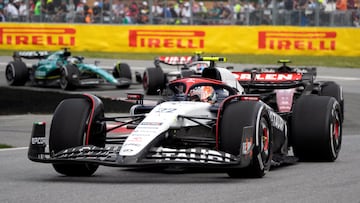What are the new F1 rules and what are the changes to the 2023 World Cup cars?
We review the main developments presented by the 2023 Formula 1 season that give continuity to the great changes that were introduced last year.

The big change in Formula 1 occurred last year, so now it’s a matter of fine-tuning it little by little until the next one arrives in 2026, when there will be more focus on power units. For this reason, the novelties in the sports and technical regulations are few. The main and most important point is that the number of grand prix with sprint races is doubled from three to six. The races chosen for this are Azerbaijan, Austria, Belgium, Qatar , United States and Brazil. The distribution of points (eight for first and one for eighth) is maintained, as well as the weekend format: Friday with Free Practice 1 and Qualifying, Saturday with Free Practice 2 and sprint, and the race on Sunday.
Main technical innovations
As for the technical changes, they can also be counted on the fingers of one hand and mainly affect the safety of the single-seaters and definitively put an end to the annoying porpoising that caused so much trouble last season. We review them below:
Taller cars
To consolidate the elimination of porpoising, the FIA forces cars to be raised 15 millimeters and reinforces the ends of the flat bottom in order to avoid these oscillations. They will be stiffer. The measure was announced in the last third of last season and has forced the factories to work with very little time. It also increases the height of the diffuser by 10 millimeters.
Safety
The anti-rollover arch of the single-seaters has been reinforced. Guanyu Zhou’s violent accident at Silverstone (with no consequences for the driver) has prompted stricter controls to ensure that F1′s safety structures can withstand a rollover impact. Any appendage to the car above 935 millimeters must withstand a 15G impact.
Tires
Pirelli slightly modifies the wheels before each season to accommodate the speeds and G-forces that the cars develop. One more compound is introduced in the range: from C0 to C5 depending on its degree of hardness.
Pontoons
With the current regulations that simplify the design of both wings, the sidepods have gained in importance because it is in that middle area of the car where engineers focus most of the aerodynamic work. Hence, the solutions proposed by the teams are so different from each other, although Red Bull sets the trend by being the most efficient.
Chassis
After the radical change in the cars that caused the entry of the new regulations last year, this is one of continuity, which is why there are hardly any significant changes, although the concept continues to evolve. Thus, in the second part of 2023, solutions will be tested to reduce the spray that cars leave in their wake on wet asphalt.






